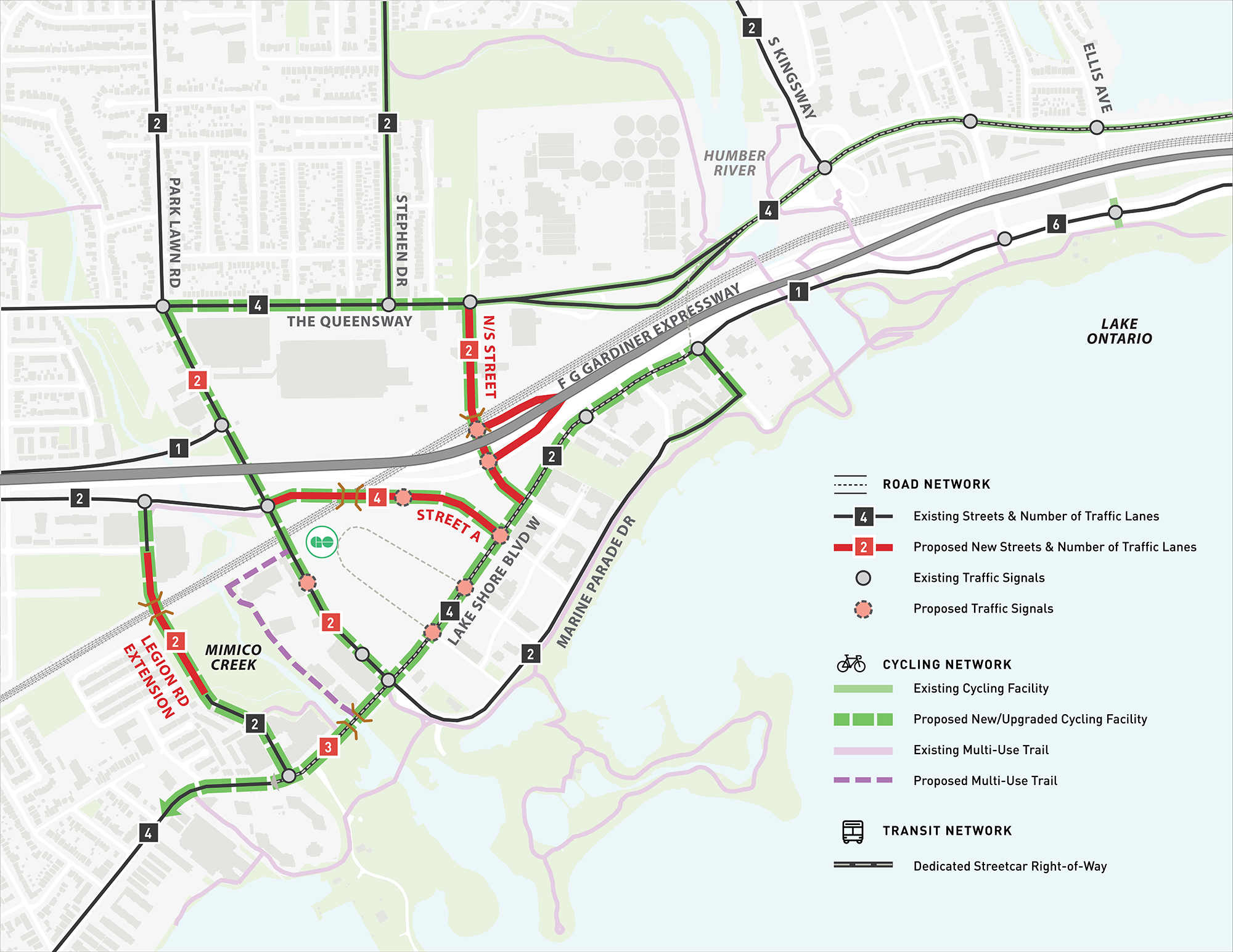
On May 11, 2022, City Council endorsed the Final Preferred TMP Network and has authorized the City to begin the next steps to implement the TMP, with two amendments.
You can find more information about the City’s decision here: Item IE29.4
You can watch the video of City Council meeting from the Toronto City Council and Committees web page or the City of Toronto’s YouTube channel .
On April 26, 2022, Infrastructure and Environment Committee (IEC) endorsed IE29.4 – staff recommendations to endorse the Final Preferred TMP Network.
Transportation Network Alternatives were developed by reviewing, refining, bundling and evaluating shortlisted solutions previously presented at stakeholder and public engagement in June 2020.
Each of the Transportation Network Alternatives was comprehensively evaluated using an evidence-based approach to identify a Preliminary Preferred Network. The evaluation was also informed by stakeholder and public input received from local residents and businesses. An overview of the Evaluation Criteria is described below:
| Icon | Thematic Area | Evaluation Criteria |
 |
Policy Frameworks |
|
 |
Safe & Healthy Communities |
|
 |
Mobility |
|
 |
Natural Environment |
|
 |
Cultural Environment |
|
 |
Social Equity |
|
 |
Economic & Financial Considerations |
|
The results of the evaluation for each of the Transportation Network Alternatives are summarized in the table below. The Preliminary Preferred Network Alternative is Network 4B Neighbourhood Main Streets with 4-lane Lake Shore.
| Evaluation Criteria | Alternative 1 | Alternative 2 | Alternative 3 | Alternative 4A | Alternative 4B | Alternative 4C |
| Policy Framework | Screened out | |||||
| Safe & Healthy Communities | Screened out | |||||
| Mobility | Screened out | |||||
| Natural Environment | Screened out | |||||
| Cultural Environment | Screened out | |||||
| Social Equity | Screened out | |||||
| Economic & Financial Considerations | Screened out | |||||
| Overall | Screened out |

The Final Preferred Network Alternative is Network Alternative 4B Neighbourhood Main Streets with 4-lane Lake Shore. Network Alternative 4B provides area transportation improvements needed to address existing and future issues using a comprehensive evaluation approach:
While we aim to provide fully accessible content, there is no text alternative available for some of the content on this site. If you require alternate formats or need assistance understanding our maps, drawings, or any other content, please contact us at 416-392-2990 or tracy.manolakakis@toronto.ca